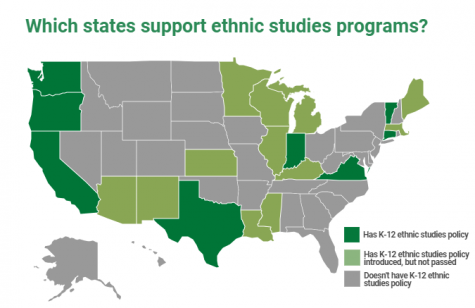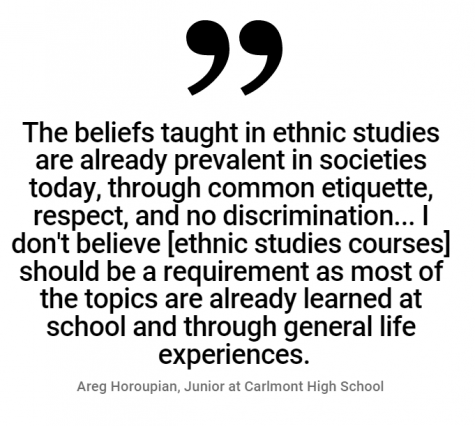Political controversy has surrounded the newly signed legislation that requires all high school students in California to take a semester-long Ethnic Studies course to receive a high school diploma.
On Oct. 8, Gov. Gavin Newsom signed a bill adding a one-semester Ethnic Studies course to the state’s high school graduation requirements to public schools in California.

“America is shaped by our shared history, much of it painful and etched with woeful injustice… Students deserve to see themselves in their studies, and they must understand our nation’s full history if we expect them to one day build a more just society,” Newsom said in a written statement.
The history of Ethnic studies stems from student protests dating back to 1960 at San Francisco State University and the University of California, Berkeley. Students demanded courses in Asian American, Native American, Latin American, and African American studies. The goal of these protests was for every student to learn the histories, cultures, struggles, and contributions of other cultures in U.S. history.
Today, California has become the first state to mandate Ethnic Studies for all students, starting with the class of 2025.
Carlmont High School has replaced the three-quarter-long World History class with the new Ethnic Studies course. While some students are ecstatic to see this change, others question the extent of its necessity.
“Instead of learning primarily about the achievements of figures in history whom I don’t feel as though I can relate to, we are able to learn about our own cultures and communities and the contributions our ethnic groups have made to society. It makes me feel as though I belong. I like how it is inclusive of all races and backgrounds,” said Aashna Sharma, a freshman at Carlmont who is currently taking the course.
For others, the loss of a World History class is concerning.

“If given the option between Ethnic Studies and World History, I would definitely take World History, as it is not often provided in other schools. The ideas of Ethnic Studies are taught to you throughout your entire life,” said Areg Horoupian, a junior at Carlmont High School.
For many students, it seems counterproductive to replace a class like World History with Ethnic Studies. Some students have even presented the idea of including more countries in the World History curriculum, as opposed to eradicating it altogether.
Nevertheless, the very requirement of the class has sparked nationwide partisan conflict with the left in support of the new curriculum, and the right opposed.
During a Fox News Interview with Maria Bartiromo, Candace Owens, a conservative activist and author, revealed the right wing’s view on the Ethnic Studies class.
“The concept of critical race theory and ethnic studies taught in schools is telling American children that if they are white, they inherently have an advantage and black people inherently have a disadvantage, no matter how hard they work… This raises a victim mentality in students [of color], and they start blaming everything that goes wrong in their lives on white privilege,” said Owens.

Owens even went as far as to suggest that parents remove their children from public learning institutions to opt for private schools or even homeschooling. Conservatives like Owens have started to question whether public education has become too ‘woke’ and liberal.
“Public schools are turning impressionable students into soldiers for the leftist government,” said Owens. “The problem with the left is that they force their victim mentality upon other people who take to the streets and become permanent activists instead of adding value to society.”
For many on the right, Ethnic Studies shouldn’t even be an option for students. For students currently taking the course, however, the sentiments are different.
“I think [Ethnic Studies] should be required for students because it teaches students valuable information and it increases empathy,” said Abigail Sinarle, a freshman at Carlmont High School.
Despite the current political debate about the subject’s existence, students are generally satisfied with the course. The curriculum is still in the making, but it has already started to achieve its goal of representation for students like Sinarle and Sharma.












